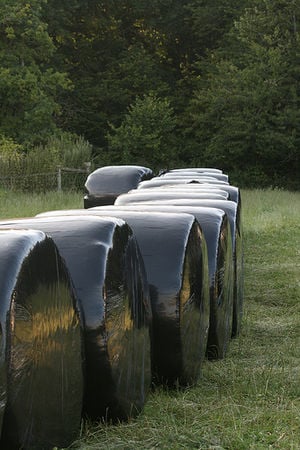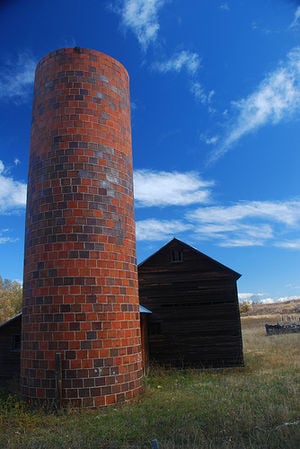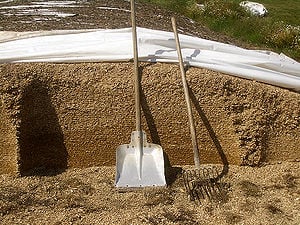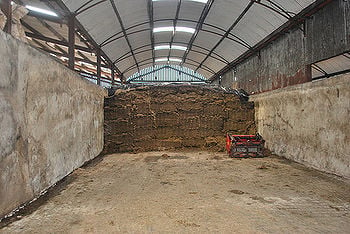Note: This page was transwikified from Open Source Ecology - please help adapt it to Appropedia.


Silage is the preservation of green fodder in a silo by means of lacto-fermentation. It relies largely on lactobacilli, especially Lactobacillus plantarum, and is thus similar to the way in which Sauerkraut and Kimchi are preserved.
Advantages and Disadvantages
Advantages:
- weather at harvest time is largely irrelevant
(make hay while the sun shines) - often has better nutrient preservation than hay (=>happier, healthier cows)
- wide range of crops can be used (see below, "feedstocks")
- weedy harvest can be used, get rid of weed seeds in the process
- large quantities can be stored, preserved for years
- no need for further processing
- even horses can be fed with silage, although the process is tricky and somewhat different from that for regular silage
Disadvantages:
- harvest is heavier than hay, meaning that somewhat higher initial energy input is required
- high weight and water content means that silage cannot be transported very far, therefore has low commercial value
- equipment may be more expensive than that used for hay
- infrastructure for storage may have to be built (silo)
- when plastic sheets are used, there will be plastic waste that has to be recycled.
- silage odor !
Suitable feedstocks
grass crops, corn (maize), sorghum, cereals (wheat, oats), hemp, beans, clover, sunflowers, ...
Applications and Technology Interactions
- the traditional use: as livestock fodder for ruminants (cattle, goats, sheep)
- feedstock for anaerobic digester to make biogas (popular: corn silage)
- silage contains abundant lactic acid (duh!) - a major platform chemical for organic chemistry
- lactic acid is the basic feedstock for many biodegradable bioplastics such as PLA. In a process described here, silage is pressed and the liquid harvested for its amino acids and lactic acid. The remaining fibrous cake can still be used as fodder for livestock or as biomass for other uses (combustion, pyrolysis, biochar, perhaps as mulch ...).
- bioplastics are also needed to make silage bales or silage tubes
- compressed earth bricks to build a permanent vertical silo
- there is often a nitrogen-rich liquid that drains from larger silos. It can be used as liquid fertilizer, for example in hydroponics, or to grow duckweed (it may have to be buffered first).
- filter any vented air through a charcoal filter (biochar) to reduce smell
- (speculative, unproven:) is it possible to grow maggots on silage ? (use for aquaculture and as chicken/duck food)
- silage may be suitable as a substrate for mushroom cultivation (again, buffering may be necessary)
Links
- Wikipedia: Silage
- polylactic acid and PLA shrink film for packaging

